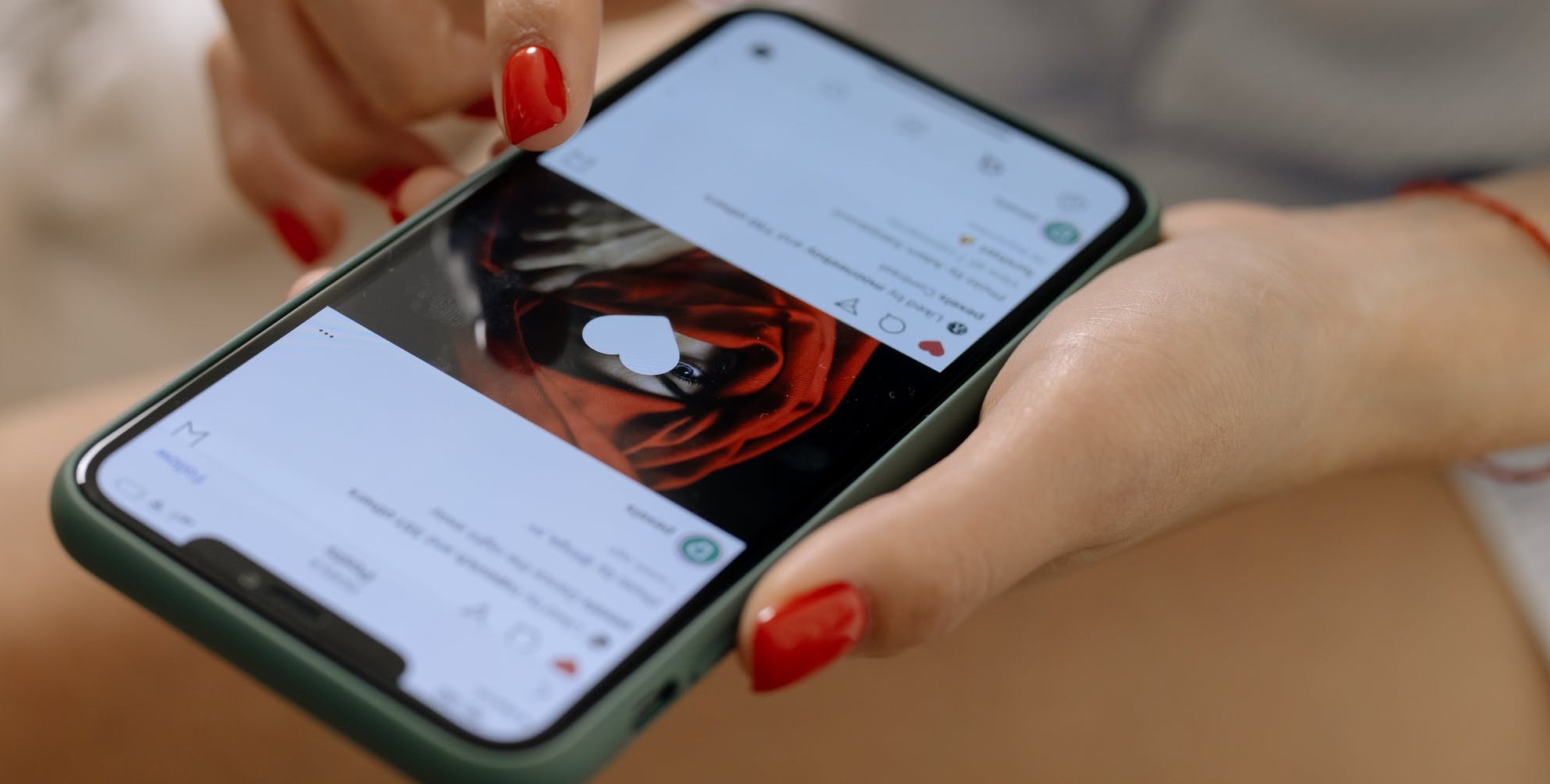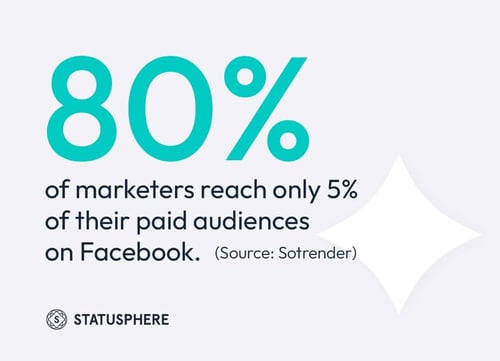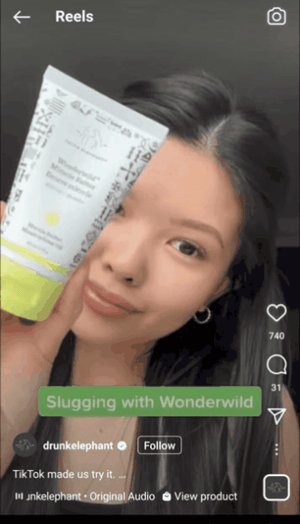Instagram Reels vs In-Feed Posts: Do They Have the Same Reach?
What’s the advantage of Instagram Reels vs Posts for more reach? This post tackles both types of content, when to publish them and how they're ranked...
How does the 2022 Instagram algorithm work? This guide breaks down what brands should know about the algorithm and how to adapt to new Instagram updates.

.jpeg?width=2250&name=ig%20algorithm%20cover%20photo%20(1).jpeg)
"Oh great, did the Instagram algorithm change again?”
If you’re worried about your reach or engagement rate, we hear you.
Because Instagram is rolling out fresh features and updates faster than brands can keep up.
With over 2 billion monthly active users, Instagram is ranking more content than ever. It’s no surprise that the IG algorithm is evolving as a result.
Unfortunately, brands are often hit hardest when the Instagram algorithm changes.
Don't panic, though. That’s exactly why we put together this post where you’ll learn:
Just when you think you understand how the IG algorithm works, it switches up on you.
Let’s kick things off by looking at the state of the 2022 Instagram algorithm. This includes notable features, updates and trends. We’ll also cover actionable ways to respond to the latest changes.
If you’re not thrilled with the numbers on your Instagram dashboard right now, you’re not alone.
Recent data from Rival IQ notes that organic engagement has fallen 30% within the past year. Instagram’s median engagement rate sits at a paltry 0.67%.
/Instagram%20Engagement%20Data_1.jpg?width=700&name=Instagram%20Engagement%20Data_1.jpg)
Source: Rival IQ
A similar downward trend is happening with Stories reach as well. For example, the average brand account with <5,000 followers earns an average reach of 16.85% for posts and 8.43% for Instagram Stories.
Sure, getting featured in your followers’ feeds has never been a sure thing.
But it’s the degree to which organic reach has fallen that’s so staggering.
Competition on the platform is fierce. As a result, how the Instagram algorithm ranks content is becoming more complicated.
These numbers might seem bleak but not all hope is lost. Consider that the average influencer engagement rate on Instagram is 1.75x that of the average brand (1.18% vs 0.67%). Micro-influencers on Instagram with <15K followers have the highest engagement rates of all accounts (3.86%).
This reflects what we’ve seen across the influencer space firsthand. There are plenty of creators earning reach and engagement thanks to the dedicated audiences they’ve already built.
/creator%20reach%20example_1.jpg?width=302&name=creator%20reach%20example_1.jpg)
Why engagement and reach are falling for brands is up for debate. It’s no secret that social media is becoming increasingly “pay-to-play.” Even so, recent reports that only 5% of Meta ads reach their target audience is a wake-up call for anyone looking to go all-in on social ads.

Connecting the dots, this explains why influencer marketing budgets are increasing. Brands want to move away from underperforming ads and pursue creator campaigns with guaranteed reach.
Food for thought: Reels represent 20% of all activity on Instagram.
And that’s why you can’t seem to escape ‘em in 2022.
The concept of social algorithms favoring video isn’t breaking news. Still, the Instagram algorithm has been pushing them hard.
Head of Instagram Adam Mosseri explicitly said videos are the future of Instagram in a May 2022 post. The platform will continue prioritizing video content moving forward — expect Reels to be at the forefront.
/feed%20changes_1.jpg?width=500&name=feed%20changes_1.jpg)
Source: @mosseri
If you're new to them, don’t dismiss Reels as a TikTok copycat. Bite-sized video is blowing up across social media and brands are already on board. For example, product-focused Reels are a prime opportunity to educate and entertain your audience.

Source: @drunkelephant
Fact: the algorithm relies on factors like engagement and watch-time when serving relevant content. That's why Reels should be central to your content strategy. For example, someone that frequently interacts with beauty posts will likely see Reels reviewing skincare brands.
Instagram Reels are notable for how well product-focused posts perform. You can earn massive engagement as long as your videos are coupled with entertainment value.
/Bounce%20Curl%20Reels_1.jpg?width=350&name=Bounce%20Curl%20Reels_1.jpg)
Source: @bouncecurl
We can read between the lines about the future of the Instagram algorithm based on the platform’s most recent features and updates. Similar to when Stories blew up a few years back, Instagram is regularly rolling out of new features for Reels (like templates).
In April 2022, Adam Mosseri said that the new algorithm would reward accounts that create "original content."
Not a huge surprise, right? “Create original, quality content” has been the go-to, cliche advice for brands on social for over a decade.
But Instagram algorithm changes are rarely so straightforward.
We can interpret the call for “originality” as a push for accounts to publish content native to Instagram. This is a call-back to last year’s claims that Instagram would punish content containing the TikTok watermark.
/Instagram%20ranking%20for%20originality_1.jpg?width=350&name=Instagram%20ranking%20for%20originality_1.jpg)
Source: Twitter
The Explore feed relies on the Instagram algorithm to source its posts.
And the feed is a goldmine of insight for brands that take the time to, well, explore.
That’s because everything presented in "Explore" is comprised of content that Instagram deems “relevant” and engagement-worthy. If you’re looking for trends, topics and terms related to your target audience, look no further.
/instagram%20explore%20page%202_1.jpg?width=350&name=instagram%20explore%20page%202_1.jpg)
If you haven’t noticed already, you can now enter keywords into the Instagram Explore search bar. Prior to this, you could only search via hashtags and accounts.
/instagram%20autocomplete_1.jpg?width=350&name=instagram%20autocomplete_1.jpg)
Thankfully, this update didn’t drive brands to go full-blown SEO mode by stuffing their captions with keywords.
How the “Explore” feed works is complicated at a glance. The short of it? Instagram serves content based on your activity, the activity of the people you follow and the perceived “relevance” of a piece of content. Keywords work alongside Instagram’s AI to figure out what you'd most likely be interested in.
/instagram%20search%20example_1.jpg?width=350&name=instagram%20search%20example_1.jpg)
Hashtags have been an oft-cited “hack” to beat the Instagram algorithm.
The reality? According to Instagram themselves, hashtags are “not going to meaningfully change the amount of reach when you post.”
/hashtag%20tweet_1.jpg?width=400&name=hashtag%20tweet_1.jpg)
Source: Twitter
Recent industry research backs this up. Social Insider recently analyzed 75 million Instagram posts and guess what? They found that hashtags had little-to-no impact on impressions.
/socialinsider%20study_1.jpg?width=700&name=socialinsider%20study_1.jpg)
Source: Social Insider
That’s not to say that hashtags should be left out of your social strategy. Instagram recommends between three and five hashtags for any given post. They explicitly say that using 10+ won’t help your content by default. In their words, relevant hashtags are “a tool that provides context” to the Instagram algorithm.
“Likes” are integral to Instagram’s identity.
And despite concerns, letting people hide “Likes” wasn’t as big of a deal as critics initially thought.
The algorithm and user behavior are mostly the same. After all, it’s not as if “Likes” went away altogether. The metric is still 1) available for people who have them enabled and 2) visible for brands via analytics.
Even as a vanity metric, “Likes” are still valuable currently for brands and creators. Knowing firsthand which pieces of content are relevant to your audience is obviously important for future posts.
“Likes” shouldn’t be the only measuring stick for your Instagram presence, though. More meaningful interactions (like comments, shares, bio taps) signal customer intent. They represent higher-effort engagement than “Likes," too.
Critics have begged for the return of a reverse-chronological feed on Instagram for years now.
That is, you see the most recently-published posts first from accounts that you follow.
The platform recently answered the call halfway with the introduction of a “favorites” feed in March 2022. The feature allows you to create a reverse-chronological feed of posts from preferred accounts.
/image-removebg-preview_1.png?width=400&name=image-removebg-preview_1.png)
Source: The Verge
We say this is a half-measure because 1) “favorites” is not a default feed setting and 2) you can only deem 50 accounts as “favorites.” This provides people more control over the content they see but the algorithmic feed is still here to say.
What does this mean for brands? Honestly, not too much.
Getting marked as a “favorite” by followers and customers is a nice added bonus, sure. Otherwise, it’s business as usual when publishing content and interacting with followers. Your end-game is to send positive ranking signals to the Instagram algorithm.
It’s common for accounts that have suddenly lost reach to cry that they’ve been “shadowbanned.”
Shadowbans restrict your Instagram account’s visibility and reach. They’re a form of punishment for accounts that spam, violate Instagram’s terms of service or publish inflammatory content. Posts from a shadowbanned account won’t be seen by followers or served under any hashtags.
Most shadowbans are automated and Instagram doesn’t talk much about them outright. If you’re sticking to Instagram’s best practices, you shouldn’t really worry about them. For brand accounts, comment spam and excessive DMing are common causes of a shadowban.
Still, the anecdotal rise of shadowbanning signals that Instagram isn’t afraid to bite back at accounts that try to game their algorithm.
Figuring out what the algorithm “wants” means reading between the lines of:
Based on all of the above, here’s are the three key factors that influence what ranks (and doesn’t) with the new Instagram algorithm:
/Instagram%20AI_1.jpg?width=616&name=Instagram%20AI_1.jpg)
Source: Instagram
Machine learning will continue to change how content ranks on both Facebook and Instagram. In a recent Meta earnings call, Meta CEO Mark Zuckerberg described feeds of the future being "exclusively curated by users’ social circles to being recommended by AI."
For now, the primary ranking factors on Instagram are related to interactions. There’s a reason why brands with tight-knit communities thrive no matter how the algorithm changes.
If you’ve been burned by “tried and tested” ways to beat the Instagram algorithm, we get it.
Below is a breakdown of ranking factors that are often overblown in terms of positive impact on engagement and reach:
/most%20active%20times%20data_1.jpg?width=503&name=most%20active%20times%20data_1.jpg)
/content%20analytics%202_1.jpg?width=382&name=content%20analytics%202_1.jpg)
/content%20reach%20cropped_1.jpg?width=393&name=content%20reach%20cropped_1.jpg)
Brands should familiarize themselves with trending post types, sure. Still, experiment and confirm before tying yourself to a strategy.
Again, there is no “right” answer here.
But based on industry trends and ranking factors, brands should prioritize:
When in doubt, focus on the following:
Each type of post above is fair game for building out a content strategy that earns reach and interactions.
To wrap things up, let’s review some quick best practices (and common pitfalls) for business accounts navigating the latest Instagram algorithm.
/posting%20frequency%20rivaliq_1.jpg?width=700&name=posting%20frequency%20rivaliq_1.jpg)
Source: Rival IQ
/instagram%20post%20insights_1.jpg?width=350&name=instagram%20post%20insights_1.jpg)
Growing your Instagram presence means staying in the good graces of the algorithm.
And despite frequent changes, brands can still grow their engagement.
After all, the algorithm updates are just going to keep on coming. Being proactive about these changes will help you grow long-term versus ignoring the direction Instagram is headed.
The good news? The current Instagram algorithm favors creativity. There’s plenty for brands to experiment with in terms of content types, tactics and so much more.
In terms of strategies that actually work, consider influencer marketing. Partnering with creators extends your brand's reach and drives immediate conversations around your products.
Curious what an influencer campaign could do for your business? Talk to one of our consumer-to-consumer marketing specialists to find out how we can get more people talking about your brand on Instagram ASAP.
What’s the advantage of Instagram Reels vs Posts for more reach? This post tackles both types of content, when to publish them and how they're ranked...
What types of posts get the most engagement on Instagram? This post breaks down four specific types of Instagram content brands need to prioritize.
Despite popular belief, the TikTok algorithm isn’t a total mystery. This post explains how TikTok ranks content and ways brands can “beat” the...
Be the first to know about the latest tools, trends and strategies in influencer marketing for brands.